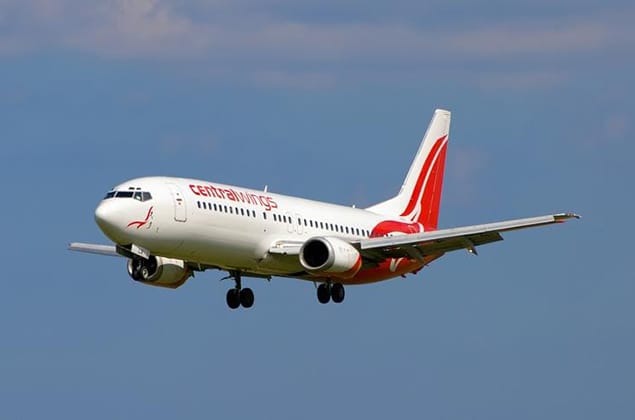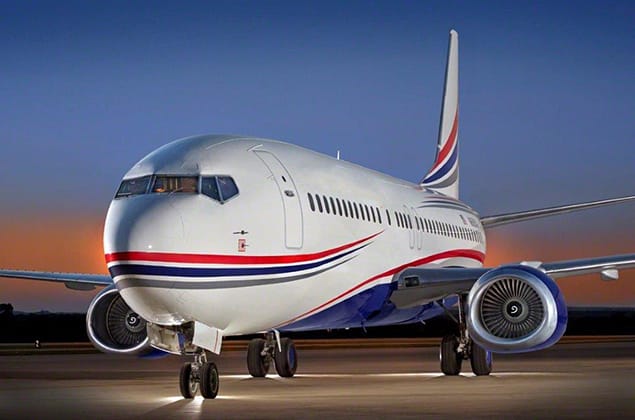Boeing 737-400 Specifications & Booking
Overview of the Boeing 737-400
The Boeing 737-400 is a narrow-body, commercial airliner manufactured by Boeing Commercial Airplanes. It is a member of the highly successful 737 family and was designed to provide a reliable and efficient air transportation solution for short- to medium-haul flights.
Technical Specifications
- Dimensions:
- Length: 107 feet 5 inches (32.76 meters)
- Wingspan: 93 feet 9 inches (28.57 meters)
- Height: 24 feet 1 inch (7.34 meters)
- Weight:
- Empty weight: 44,900 pounds (20,355 kilograms)
- Maximum takeoff weight: 63,000 pounds (28,491 kilograms)
- Engines:
- Type: CFM International CF6-80C2
- Thrust: 18,500 pounds-force (82.3 kilonewtons)
- Fuel efficiency: 20.4 miles per gallon (10.8 liters per 100 kilometers)
- Performance:
- Maximum speed: Mach 0.78 (520 mph or 837 km/h)
- Range: 3,500 nautical miles (6,480 kilometers)
- Cruising altitude: 30,000 feet (9,144 meters)
- Capacity:
- Passengers: 156-162 seats
- Cargo: 11,200 pounds (5,062 kilograms)
- Crew: 2 pilots and up to 4 flight attendants
Design and Features
The Boeing 737-400 features a distinctive raked wingtip design, which helps reduce drag and improve fuel efficiency. It also has a high-aspect-ratio wing, which provides excellent lift and maneuverability.
History and Development
- Key milestones:
- First flight: April 24, 1988
- Certification: September 22, 1988
- Entry into service: October 1, 1988 (with United Airlines)
- Challenges faced during development:
- Significant upgrades or variants:
- BMC-400 upgrade in the early 2000s
- CFM International CF6-80C2 engine upgrade
Operational Use
- Airlines or organizations that operate it:
- Popular routes or missions:
- Role in aviation history:
Interesting Facts
- Unique design choices: The 737-400's raked wingtips and high-aspect-ratio wing provide excellent lift and maneuverability.
- Famous flights or events: United Airlines Flight 747, which was a 737-400, made the first-ever commercial flight from North America to Asia in 1991.
- Pop culture appearances:
Frequently Asked Questions
What makes the Boeing 737-400 unique?
The Boeing 737-400 is unique due to its distinctive raked wingtip design, which helps reduce drag and improve fuel efficiency. Its high-aspect-ratio wing also provides excellent lift and maneuverability.
How much does the Boeing 737-400 cost?
The estimated cost range for a new Boeing 737-400 is between $20 million to $30 million, depending on configuration and customization options.
What is the range of the Boeing 737-400?
The Boeing 737-400 has a maximum range of approximately 3,500 nautical miles (6,480 kilometers), making it suitable for short- to medium-haul flights.
Which airlines operate the Boeing 737-400?
Air Canada, Delta Air Lines, and United Airlines are among the major carriers that have operated or continue to operate the Boeing 737-400. These airlines chose the 737-400 for its reliability, efficiency, and versatility.
Is the Boeing 737-400 still in production?
The Boeing 737-400 is no longer in production. The last delivery of a new 737-400 took place in 2000. However, many airlines continue to operate their existing 737-400 fleets due to their reliability and efficiency.





